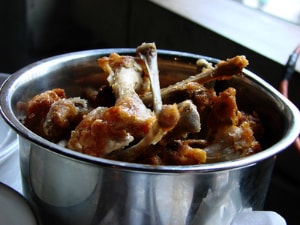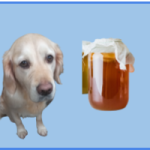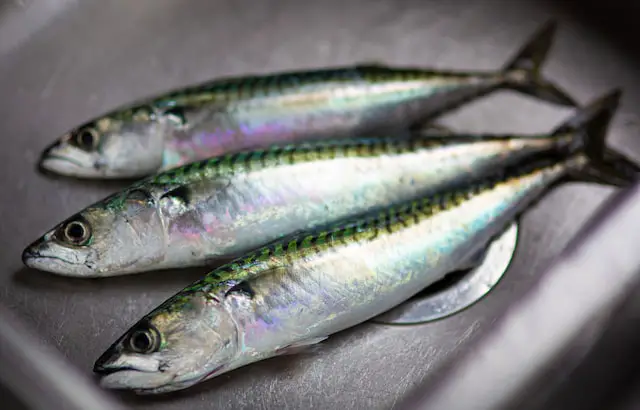
Accidents happen. The smell of fried chicken is irresistible to dogs so given half a chance they will steal it, even if that means rummaging through the trash can.
What’s done is done and beating yourself over this won’t solve anything.
You need to be practical. And calm! While cooked chicken bones can be dangerous to dogs, all the horror stories you’ll find on the Internet are rare cases.
Chances are your dog will be just fine. Here’s what you need to do to make sure he’s OK.
Why are cooked chicken bones dangerous?
First of all, let’s see why is it that cooked chicken bones are dangerous. Aren’t dogs supposed to eat bones after all?
The truth is that yes, dogs are meant to eat bones, but not just any kind.
The problem is the cooking, which makes chicken bones lose their elasticity and become brittle.
And keep in mind they are small and light to begin with.
When your pet gulps down its prey there’s a risk the bone will splinter, which can result in smaller pieces with knife-sharp edges.
Those sharp edges can do a lot of damage while traveling through your dog’s digestive system.
They can scrape and cut the esophagus, as well as the stomach or intestinal lining.
This will cause a dog a lot of pain and he might develop an infection.
Worst case scenario – the splinter punctures the stomach or intestinal lining, causing the contents to spill into the abdomen which can lead to a very nasty infection called peritonitis.
This is a life-threatening emergency, which will probably require surgery and massive doses of antibiotics.
What are the symptoms of the chicken bone getting stuck?
Since you have the time to be reading this, I can assume that your pet has not choked on the chicken bone, but you need to be aware of this problem, just in case the little devil manages to get his paws on another juicy chicken bone.
Sometimes a bone or a splinter can become lodged in the esophagus. You’ll notice your dog salivating and pawing at his muzzle frantically trying to get rid of the obstruction. He won’t manage on his own so you need to step in.
Try to open the dog’s mouth and see if you can locate the obstructing piece. If you don’t see anything, but your dog is in distress and keeps making choking sounds you will need to perform the Heimlich maneuver , just as you’d do with a small child.
Take a minute to see how it’s done as it might one day save your pet’s life.
What are the symptoms of cooked chicken bone splintering?
Once the dog has managed to swallow the bone, there’s really nothing else you can do but watch him closely and hope for the best.
Just to make this clear – if he has successfully swallowed the chicken bones, don’t try to make your dog throw up as this might cause a lot of harm. If there are splinters they might tear the esophagus on their way up or they might get stuck.
The symptoms something might be wrong with your dog are:
- Vomiting
- Difficulties defecating
- Bloody stools
- Swollen or tender abdomen
- Lethargy
- Abnormal behavior
Experts recommend monitoring your dog for the next 24 hours and checking the stools to see if the bones have passed. That’s yucky, but it needs to be done.
Can dogs digest cooked chicken bones?
The acids in your dog’s stomach are strong enough to digest a chicken bone, at least partially. Since the acids will obviously attack the outer layer of the bones there’s a good chance they will soften the sharp edges or dissolve them completely. That means the dog will be able to pass the bone splinters without any significant problem.
Now, the fact is food typically stays only a couple of hours in the dog’s stomach before moving to the intestines, so you can expect some pieces making their way there.
When a dog manages to eat a cooked chicken bone, the best thing you can do is to give him some soft bulky food to help cushion the sharp edges.
Most vets recommend feeding the dog pieces of bread. You can also try a spoonful of plain pumpkin if you have it at hand or some boiled rice.
On some forums you might find people recommending cotton balls soaked in olive oil. The oil won’t harm the dog, but the cotton balls might get stuck along the digestive tract creating a whole new problem. As they say, don’t try this at home!
How long will it take to digest chicken bones?
As a rule, the food in a dog’s stomach should be digested and on its way out within 24 hours. If you don’t see any bone fragments in the stool just give it a couple of days more time.
Don’t be alarmed if you don’t see any bone fragments in the stools. Maybe the dog really did a good job on chewing that bone and the pieces were small enough to be fully dissolved.
If 72 hours have passed and your dog is very much his usual self, he is probably out of the woods. However, keep track of his bowel movements for a few more days just to make sure he doesn’t have an intestinal obstruction. Constipation, rectal bleeding or bloody diarrhea are all symptoms indicating intestinal obstruction and you should see your vet right away.
Are raw chicken bones better for dogs?
Raw bones are always better than cooked ones, but when it comes to chicken stick with raw chicken wings, which are considered safe for dogs. Dogs on a raw diet can be offered raw chicken wings as a treat or you can chop them up and mix them with boiled rice or vegetables.
Why are bones good for dogs?
Just because cooked bones can be harmful, that doesn’t mean you should not give bones to your pet.
Bones should be part of a dog’s diet, as they provide essential nutrients, especially minerals like calcium.
At the same time, chewing bones keep your dog’s teeth and gums clean and healthy. Not many dogs allow their owners to brush their teeth on a regular basis, so chewing bones doubles as dental hygiene.
One other important thing, chewing is a natural instinct for dogs and they need to satisfy this need. Also, chewing bones provides dogs with mental stimulation as this fun activity forces them to exercise not only their jaws but their brain as well. For a dog, dealing with a large bone is the equivalent of solving a complex maths problem. After vigorously chewing on a bone for half an hour don’t be surprised if your pet is so exhausted he’ll need a nap!
Why are bones bad for dogs?
If you give your dog a large bone to chew on twice a week, that’s quite adequate for his needs. Bones can become a problem if your dog eats too many of them. This is especially true of large marrow bones, which are absolutely delicious as far as your dog is concerned. However, the juicy stuff inside a large bone is also full of fat.
Short term, this might cause your dog vomiting and diarrhea. Long term, you’re looking at a potential bigger problem, pancreatitis . When a dog has too many fats in his diet this can lead to an inflammation of the pancreas and it can be quite serious for your pet.
What are the best animal bones for a dog to chew?
Always try to feed your dog raw large weight-bearing bones which are quite dense and there’s little risk of splintering. The best are cow bones, particularly leg bones.
You can also give your dog pig leg bones or ribs, just don’t ever feed him leftovers of your steak. Those are too small, so not OK at all.
Another option is lamb ribs or flaps.
Since your pet should eat fresh meaty bones at least twice a week try talking to a local butcher for a reliable source. You can buy bulk and keep some bones in the freezer.
What is the best way to use cooked chicken bones with your dog?
If your family likes chicken, it would be a shame not to feed your dog chicken too. Just as chicken broth is healthy for humans, it’s also great for dogs, especially if your pet is recuperating after an illness. Chicken broth contains collagen which is good for the joints as well as glycine, which acts as detox for your pet’s liver and kidneys.
Chicken broth is super easy to make. If you want you can boil a whole chicken and let it simmer for one hour. You can take the chicken out and use it to cook your family meal and save the broth for your dog.
At the same time, if your family only likes parts of the chicken, cut out the breast or legs the humans will eat and only put to boil the other parts in a little water.
You can use the chicken broth to soften dry food if that’s what your dog usually eats.
When your dog is on a bland diet following a bout of diarrhea, use the broth to boil some rice in it. It’s not only nutritious, but it also gives the rice a delicious flavor.
Also, when you’re making chicken broth for your dog, feel free to throw in a couple of carrots, which are quite healthy for your pet.
Finally, if you’re making chicken broth for your family, you can set aside a serving for your dog before adding things like onions, garlic and salt. Keep in mind that salt can be dangerous for your pet!
If you’ve made a large pot, don’t worry, you can keep it in the fridge for a few days and just add a bit to your dog’s regular meals.
Closing thoughts
Cooked chicken bones can be dangerous to your dog, but there’s no need to fly into a panic if your pet just stole your KFC meal. If he hasn’t choked on the bones, he’ll probably be fine. Keep an eye on him in case the bones have splintered and give him some bread to cushion the sharp edges. In most cases, the bones will largely be digested by stomach acids and the rest will pass through without creating any problem.
Next time, don’t let your dog unsupervised when there’s some yummy chicken on the dinner table. Even with a trained dog, the temptation might prove too strong.
However, don’t forget that dogs do need bones in their diet. Just make sure they get big raw bones, which are totally safe!






